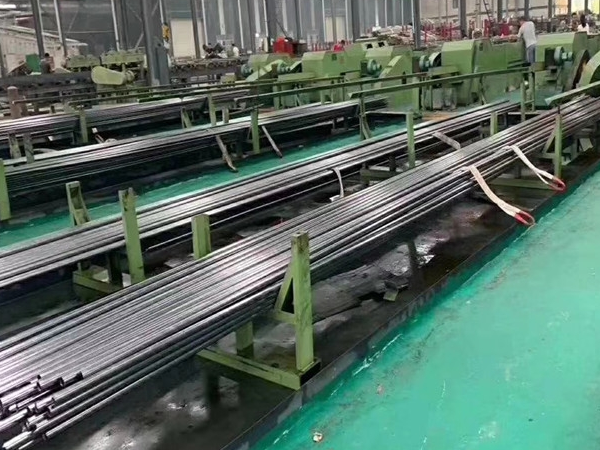Causes of Defects in Cold Drawn Seamless Tubes
Date:2023-04-06
Views:805
The production of seamless tubes requires cold drawing technology, so some defects may appear during the cold drawing process. What are the specific reasons for the defects in seamless tubes during cold drawing? Next follow the seamless tube manufacturers to find out.
What is a cold drawn seamless tube?
Cold-drawn or cold-rolled precision seamless tubes are cold-drawn or cold-rolled precision seamless steel tubes with high dimensional accuracy and good surface finish for mechanical structures and hydraulic equipment.
Cold drawn seamless tube production process: Round tube blank → heating → piercing → head → annealing → pickling → oiling (copper plating) → multi-pass cold drawing (cold rolling) → blank tube → heat treatment → straightening → water Pressure test (flaw detection) → marking → storage.

The root cause of defects in cold drawn seamless tubes:
1. The quality of the cold drawn seamless tube material and the middle pipe is not good enough, and the geometrical specifications do not meet the requirements, the vertical and horizontal wall thickness is relatively uneven, the bending degree and ellipse are too large, and the composition is not good Compatibility, physical performance does not match.
2. Failure to follow the safety operating procedures for preparing the process in advance before cold-drawing seamless tubes. The most important thing is that the drilling process is wrong, the chemical treatment and heat treatment process is not well operated, the pipe end has burrs, the sharpening quality is not high, and defects occur during the transportation process, etc.;
3. Failure to follow the safe operating procedures for the whole process of extubation. The main manifestations are that the axis of the cold-drawn steel pipe is inconsistent with the drawing, the installation of the drawing die is skewed, the drawing speed is too fast, the selection of special tools is not good, the diameter of the mandrel support rod is too large or too small, the amount of seamless splicing is large, Mandrel feeding does not wait immediately;
4. The quality of the extruding die and the mandrel is not very good, including poor smoothness, low strength and compressive strength, non-conforming specifications, incorrect mounting of the cemented carbide tool die, etc.;
5. The extubation machine is in disrepair. For example, the extubation car is skewed, the mold base or the extubation mold itself is installed on the central shelf, etc.


